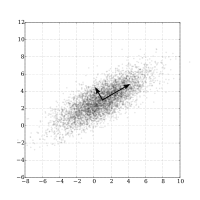
Photo from wikipedia
The accidental introduction of exotic wood-boring cerambycid beetles represents an ever-increasing threat to forest biosecurity and the economies of many countries. Early detection of such species upon arrival at potential… Click to show full abstract
The accidental introduction of exotic wood-boring cerambycid beetles represents an ever-increasing threat to forest biosecurity and the economies of many countries. Early detection of such species upon arrival at potential points-of-entry is challenging. Because pheromone components are often conserved among related species in the family Cerambycidae, we tested the generic attractiveness of different blends of pheromones composed of increasing numbers of pheromone components at both potential points-of-entry and in natural forests in France during 2014–2017. Initially, two different four-component blends were compared, one composed of fuscumol, fuscumol acetate, geranylacetone, and monochamol, and the other composed of 3-hydroxyhexan-2-one, anti-2,3-hexanediol, 2-methylbutanol, and prionic acid. In a second step, host volatiles (ethanol and [-]-α-pinene) were added, and finally, we tested the effectiveness of a mixture of all eight pheromone components with the two host volatiles. Overall, 13,153 cerambycid beetles of 118 species were trapped. The 114 native species trapped represent 48% of the French fauna, including more than 50% of the species in 25 of the 41 cerambycid tribes. At potential points-of-entry, captures included 2960 cerambycids of 49 species, including three exotic Asian species, two of which had never been reported previously in Europe. In forests, attraction to the four-component blends varied with their composition. Adding host volatiles did not change the overall attraction except for the species Phymatodes testaceus, which showed a fourfold increase in captures. Placing the two four-component blends on the same trap resulted in significant increases in the number of species and individuals captured compared to captures by traps baited with each blend individually. Finally, the eight-component pheromone blend was found to be as attractive as the combination of the two four-component blends hung together on the same trap, without apparent antagonistic effects. This finding suggests that use of multi-component lures may help to minimize the costs and manpower required to detect exotic and potentially invasive species.
Journal Title: Journal of Pest Science
Year Published: 2018
Link to full text (if available)
Share on Social Media: Sign Up to like & get
recommendations!